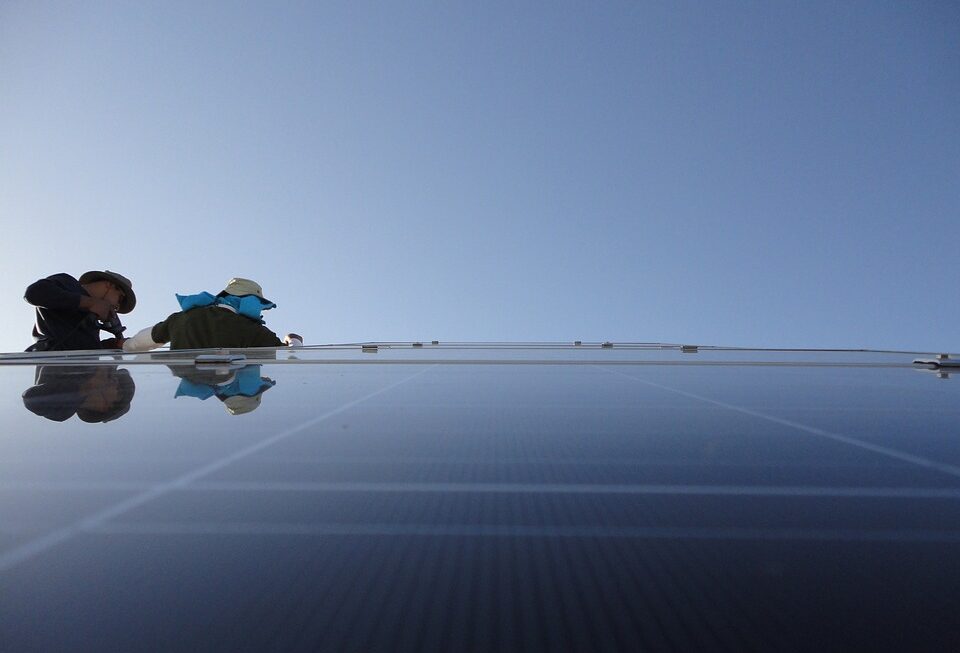[ad_1]
Harnessing the Power of the Sun: The Latest Innovations in Solar Energy Technology
Introduction:
Solar energy is rapidly gaining popularity as a viable alternative to traditional forms of energy. As the sun radiates an abundant amount of energy, scientists and engineers have been tirelessly working on innovating solar energy technology to harness and utilize this limitless power source in more efficient and cost-effective ways. In this article, we will explore some of the latest advancements in solar energy technology, how they work, and their potential impact on our lives.
1. Photovoltaic Solar Panels:
Photovoltaic (PV) solar panels have been the most common and widely used technology to convert sunlight into electricity. These panels are made up of multiple silicon cells, which absorb photons from sunlight and convert them into electrons, creating direct current (DC) electricity. However, traditional PV panels have several limitations, including low efficiency levels and high manufacturing costs.
Latest Innovations in PV Panels:
a) Perovskite solar cells: One of the most exciting recent developments in PV technology is the use of perovskite materials in solar cells. Perovskite cells have achieved impressive efficiency levels, reaching near-commercial levels in laboratories. They offer a lower cost of production compared to traditional silicon-based cells and can be fabricated using a simple and scalable manufacturing process.
b) Tandem PV cells: Tandem cells combine different materials with varying bandgaps to capture a broader spectrum of sunlight. By stacking multiple layers of cells, each optimized for a specific wavelength range, tandem cells can achieve higher efficiencies than traditional single-junction cells. This technology is still in the experimental stage but shows great promise for future applications.
2. Concentrated Solar Power (CSP):
Concentrated Solar Power (CSP) systems use mirrors or lenses to concentrate sunlight onto a receiver, which then converts the solar energy into heat or electricity. These systems are particularly attractive for large-scale power generation as they can provide a steady and continuous source of electricity.
Latest Innovations in CSP:
a) Molten Salt Thermal Energy Storage: One of the main challenges faced by CSP systems is the intermittent nature of sunlight. To overcome this, researchers have developed new systems that can store excess thermal energy in molten salts during the day and release it at night or during periods of cloud cover. This technology ensures a constant supply of electricity, regardless of sunlight availability.
b) Floating CSP plants: Another interesting advancement in CSP technology is the development of floating solar power plants. These plants can be deployed on bodies of water, utilizing the free surface area while reducing land use. Floating CSP offers an additional advantage of reducing water usage and evaporation, making it an environmentally-friendly and efficient option.
3. Solar Windows:
Solar windows or photovoltaic windows are an emerging technology that integrates solar cells into transparent window panes, allowing them to generate electricity while still performing their primary function of providing natural light in buildings.
Latest Innovations in Solar Windows:
a) Transparent perovskite solar cells: Researchers have made significant progress in developing transparent perovskite solar cells that can be integrated into window glass. These cells are capable of reaching high levels of transparency while generating electricity from sunlight. Although still in the experimental stage, transparent solar windows hold immense potential for widespread adaptation, particularly in high-rise buildings with extensive glass facades.
b) Luminescent solar concentrators: Another approach to solar windows involves the use of luminescent solar concentrators. These windows contain tiny fluorescent materials that capture sunlight and guide it towards the edges, where traditional solar cells convert it into electricity. Luminescent solar windows offer a cost-effective and aesthetically pleasing solution for integrating solar power generation into architectural designs.
FAQs:
Q1. How efficient are solar panels?
A1. The efficiency of solar panels varies depending on the technology used. Traditional silicon-based PV panels typically have an efficiency range of 15-20%. However, newer technologies, such as perovskite solar cells, have achieved laboratory efficiencies above 25%. Ongoing research aims to further improve the efficiency of solar panels in the coming years.
Q2. Are solar panels cost-effective?
A2. Solar panels have become increasingly cost-effective over the years. The initial installation cost is offset by long-term energy savings, as solar energy is essentially free once the system is installed. Furthermore, government incentives and falling solar panel prices have made solar energy an attractive investment for both residential and commercial applications.
Q3. How long do solar panels last?
A3. Most solar panels come with a warranty of 25-30 years, which indicates their expected lifespan. However, they can continue to produce electricity beyond this period. The performance degradation of solar panels is typically around 0.5-1% per year.
Q4. Can solar energy be stored for use during the night?
A4. Yes, solar energy can be stored for use during periods of low or no sunlight. Innovative technologies, like molten salt thermal energy storage, allow excess solar energy to be stored and used as needed. Moreover, advancements in battery technology enable storing excess energy generated during the day for nighttime use.
Conclusion:
The latest innovations in solar energy technology offer immense potential for widespread adoption, transitioning our reliance on finite fossil fuels to harnessing the unlimited power of the sun. From advancements in photovoltaic panels to concentrated solar power and solar windows, these cutting-edge developments are paving the way for a cleaner and more sustainable future. As research and development continue, solar energy technology is poised to become even more efficient, cost-effective, and readily available to meet our growing energy demands.
[ad_2]



